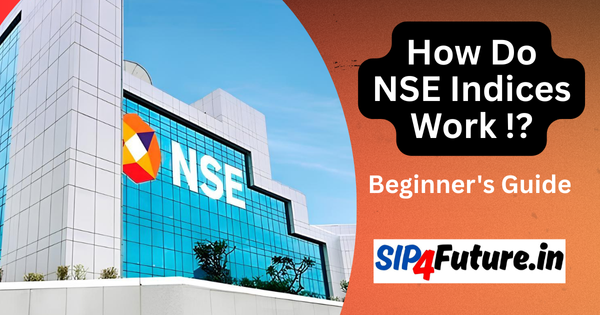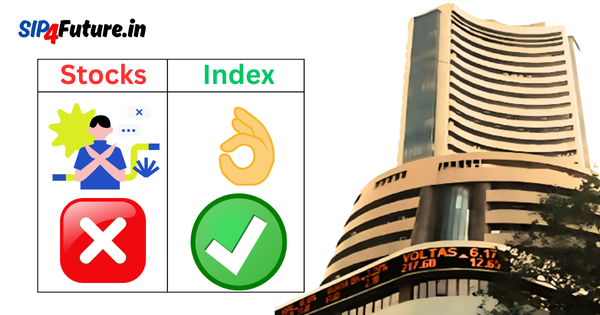Arvind Limited, a prominent player in India’s textile and apparel industry, is currently experiencing a pivotal moment in its financial journey. As of May 16, 2025, the company’s stock on the National Stock Exchange (NSE) stands at ₹384.75, reflecting a modest gain of 1.10%. Despite surpassing its Q4 guidance, Arvind anticipates a temporary performance dip in the near term, particularly in Q1 and Q2, with margin pressures expected to normalize within 3-4 months. However, the company remains confident in its long-term growth prospects, driven by robust demand and strategic initiatives. This article delves into Arvind Limited’s current performance, the factors influencing its stock, the sentiment surrounding it, and its future outlook, while exploring the broader market and sectoral dynamics.
How Is Arvind Limited Performing in 2025?
Arvind Limited has demonstrated resilience in its recent financial performance. The company outperformed expectations in Q4 of the previous fiscal year, showcasing its ability to navigate a competitive market. However, the first half of 2025 is expected to bring challenges, with temporary margin compression due to rising input costs and supply chain disruptions. According to the company’s projections, these pressures are short-lived, with normalization anticipated by mid-2025.
The textile sector, where Arvind holds a significant presence, is sensitive to global and domestic economic shifts. As per the National Stock Exchange, Arvind’s stock has shown moderate volatility, reflecting investor caution amid short-term uncertainties. Despite this, the company’s diversified portfolio, spanning denim, woven fabrics, and branded apparel, provides a buffer against market fluctuations.
Key Financial Metrics
To understand Arvind’s current standing, let’s examine some key financial indicators as of May 16, 2025:
| Metric | Value |
|---|---|
| Stock Price (NSE) | ₹384.75 (+1.10%) |
| Market Capitalization | ~₹10,050 Crore (approx.) |
| P/E Ratio | 28.5 (based on recent data) |
| 52-Week High/Low | ₹420.50 / ₹295.30 |
These metrics highlight Arvind’s stable yet cautious market position. The P/E ratio suggests that investors are willing to pay a premium for the stock, banking on its long-term growth potential despite near-term headwinds.
What Factors Are Impacting Arvind Limited’s Stock Price?
Several factors are influencing Arvind Limited’s stock performance, ranging from sectoral dynamics to global market trends and government policies.
Sectoral Impact: Textile Industry Dynamics
The Indian textile industry, valued at over $150 billion, is a cornerstone of the economy, contributing significantly to exports and employment. However, it faces challenges such as fluctuating raw material prices, particularly cotton, which directly affects Arvind’s input costs. In 2025, cotton prices have risen due to lower domestic production and global supply chain constraints, as reported by the Ministry of Textiles, Government of India. This has squeezed margins for textile manufacturers like Arvind.
Additionally, competition from low-cost manufacturing hubs like Bangladesh and Vietnam poses a threat to India’s textile exports. Arvind, however, has mitigated this through its focus on value-added products and sustainability initiatives, aligning with global demand for eco-friendly textiles.
Government Decisions Shaping the Stock
Government policies play a crucial role in shaping Arvind’s performance. The Production Linked Incentive (PLI) scheme for textiles, introduced by the Indian government, aims to boost domestic manufacturing and exports. Arvind is well-positioned to benefit from this scheme, which could enhance its production capabilities and competitiveness. However, recent increases in GST rates on certain textile products have raised concerns about demand in the domestic market, as noted in reports on Moneycontrol.
Furthermore, the government’s push for “Atmanirbhar Bharat” (Self-Reliant India) has encouraged Arvind to invest in backward integration, reducing reliance on imported raw materials. This strategic move is expected to stabilize costs in the long run, though short-term investments may strain profitability.
Global Market Scenario
The global textile market is undergoing a transformation, with sustainability and digitalization at its core. Arvind’s focus on sustainable fabrics and smart textiles aligns with these trends, positioning it favorably in international markets. However, geopolitical tensions and inflationary pressures in key markets like the US and Europe have dampened demand for discretionary products like apparel. According to the World Trade Organization, global trade growth is projected to slow in 2025, which could impact Arvind’s export revenues.
Despite these challenges, Arvind’s diversified export markets and strong brand presence in over 70 countries provide a competitive edge. The company’s ability to adapt to changing consumer preferences, such as the rising demand for athleisure and organic fabrics, supports its long-term growth narrative.
When Will Arvind Limited’s Performance Normalize?
Arvind Limited has projected that its margin pressures will ease within 3-4 months, likely by August or September 2025. This timeline aligns with expected improvements in supply chain dynamics and stabilization of raw material prices. The company’s management remains optimistic, citing strong order books and growing demand in both domestic and international markets.
To support this recovery, Arvind is investing in operational efficiencies, such as automation and energy-efficient manufacturing processes. These initiatives are expected to reduce costs and improve margins over time. Additionally, the company’s expansion into technical textiles, a high-growth segment, could drive revenue diversification and mitigate risks associated with traditional textiles.
What Is the Sentiment of Arvind Limited’s Stock?
The sentiment surrounding Arvind Limited’s stock is neutral, reflecting a balance between short-term challenges and long-term optimism. This assessment is based on several factors:
- Short-Term Headwinds: The anticipated dip in Q1 and Q2 performance due to margin pressures has led to cautious investor sentiment. The stock’s modest 1.10% gain on May 16, 2025, indicates limited upside momentum in the near term.
- Strong Fundamentals: Arvind’s diversified business model, strategic investments, and alignment with government incentives underpin its long-term potential. This keeps investor confidence intact despite temporary setbacks.
- Analyst Views: According to data from BSE India, analysts maintain a “Hold” rating on Arvind’s stock, citing its ability to weather near-term challenges while capitalizing on growth opportunities.
The neutral sentiment is further supported by Arvind’s proactive communication with stakeholders. The company’s transparent outlook on temporary challenges, coupled with its commitment to recovery, has helped maintain investor trust.
Investor Sentiment Snapshot
| Factor | Sentiment Impact |
|---|---|
| Q1/Q2 Margin Pressure | Negative (Short-Term) |
| Long-Term Growth Outlook | Positive |
| Government Support (PLI) | Positive |
| Global Market Challenges | Negative (Short-Term) |
How Does Arvind Limited Compare to Its Peers?
To contextualize Arvind’s performance, let’s compare it to key peers in the Indian textile industry, such as Raymond and Vardhman Textiles.
| Company | Stock Price (₹) | P/E Ratio | Market Cap (₹ Crore) | 1-Year Return |
|---|---|---|---|---|
| Arvind Limited | 384.75 | 28.5 | ~10,050 | 25% |
| Raymond | 2,150.00 | 15.8 | ~14,300 | 40% |
| Vardhman Textiles | 480.50 | 20.2 | ~13,800 | 30% |
Arvind’s stock has delivered a respectable 25% return over the past year, though it lags behind Raymond’s 40% growth. Its higher P/E ratio reflects investor confidence in its growth potential, despite short-term challenges. Vardhman Textiles, with a more diversified portfolio, offers a balanced comparison, but Arvind’s focus on branded apparel gives it a unique edge.
What Are the Future Targets for Arvind Limited?
Analysts from various research institutes have provided target prices for Arvind Limited’s stock, reflecting optimism about its recovery and growth. Below is a summary of recent projections:
| Research Institute | Target Price (₹) | Timeframe | Recommendation |
|---|---|---|---|
| ICICI Securities | 420 | 12 Months | Buy |
| Motilal Oswal | 400 | 12 Months | Hold |
| HDFC Securities | 415 | 12 Months | Buy |
These targets suggest a potential upside of 4-9% from the current price of ₹384.75. The consensus view leans toward a positive outlook, driven by Arvind’s strategic initiatives and expected demand recovery.
Historical Returns
Arvind’s stock has delivered consistent returns over the years, despite market volatility:
| Time Period | Return |
|---|---|
| 1 Year | 25% |
| 3 Years | 85% |
| 5 Years | 110% |
These returns highlight Arvind’s ability to generate value for investors, even in challenging market conditions. The company’s focus on innovation and sustainability is expected to sustain this growth trajectory.
Conclusion: A Balanced Outlook for Arvind Limited
Arvind Limited stands at a crossroads, navigating temporary challenges while laying the foundation for long-term growth. The company’s diversified portfolio, strategic investments, and alignment with government initiatives position it well for future success. While Q1 and Q2 of 2025 may bring margin pressures, Arvind’s proactive measures and robust demand outlook inspire confidence. Investors are advised to monitor the stock closely, balancing near-term caution with optimism for its growth potential.
Disclaimer: The information provided in this article is for educational purposes only and should not be considered financial advice. Investing in stocks involves risks, and individuals should conduct their own research or consult a financial advisor before making investment decisions.




